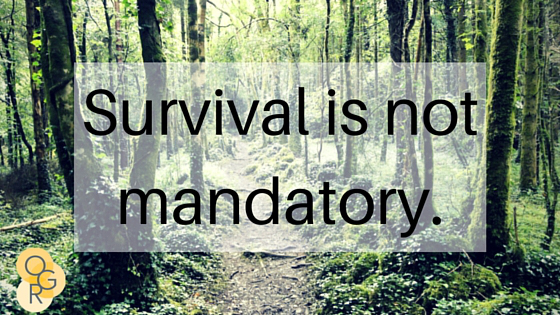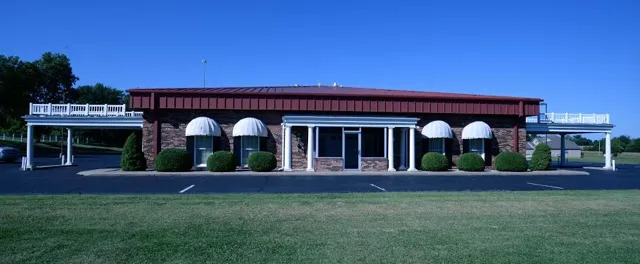8 Easy Ways Your Funeral Home Can Adapt to Change
Article originally appeared on Order of the Golden Rule FH Blog
Funeral directors often tell me they don’t need to change because their customers don’t want change. The same people used to tell me their cremation rate would top out at 10 percent, their average sale would never decline and their profit margin would always remain positive. I have no doubt that everyone has a pocket of families who never want funeral service to evolve. It’s the other 90 percent we have to watch out for. Their silence is not an affirmation that what you offered in the past will be acceptable in the future.
Change in funeral service is not new. What’s new is how quickly it’s happening. We have to stay in touch with how families want to memorialize loved ones and respond to those wishes. Like it or not, today’s customers are tough cookies. Based on research studies, conversations with progressive funeral professionals and experts who make careers out of analyzing funeral trends, here are eight ways traditional funeral homes can experiment with non-traditional options that don’t require overhauling their business plans.
- Explain what you’re going to do.
This may seem like an obvious suggestion, but it’s one many funeral professionals overlook. We live in a culture that shuns talking about death. Therefore, it’s no surprise that most people have no idea what to do when a loved one dies. Explain to families how you’re going to help them. In A Guide for Funeral Home Staff, Dr. Alan Wolfelt suggests the following three steps (paraphrased): 1) explain that you’ll take care of paperwork so they don’t have to; 2) refer to their loved one by name or relationship and state that you’ll care for their body as you prepare them for burial or cremation; and, 3) assure the family you’ll help them create a meaningful funeral experience for everyone involved. Not only will you establish yourself as a professional, but you’ll communicate your value and set the stage for a productive dialogue about the families’ wishes.
- Make funeral options and prices transparent.
Young people are not the only ones who want information before they make important decisions. Include descriptions of what you can do for families and how much that will cost on your website. Some may recoil in terror at the thought of posting prices. Guess what: your funeral home’s prices are already out there. Companies such as Parting.com collect and publish funeral homes’ prices for consumers to compare. Beat them to the punch as the source of information. Take control of how your prices are presented and connect it to the value you provide.
- Acknowledge that people dislike funeral homes.
Even though you have a beautiful funeral home, families do not like being there. Many upstart funeral providers are skipping facilities altogether for this reason. If it’s possible to meet families away from your building, offer meeting options such as a garden area or their homes. If confined to the funeral home, make sure you have the most comfortable, cheerful space possible in which to make arrangements. Think nice hotel.

- Break out of the funeral service mold.
This one’s requires a little more planning. A research study commissioned by the Funeral Service Foundation in 2012 found that a majority of people interested in meaningful funeral ceremonies didn’t think funeral professionals were creative enough to arrange healing ceremonies. Let families know there are few rules when planning funerals and ceremonies. Suggest alternative service venues including the deceased’s home. Transport the loved one’s body to the cemetery in an unusual vehicle such as a motorcycle hearse or a vintage ice cream truck. Arrange informal gatherings for friends at a local pub. Offer to post tributes on Facebook. Everyone wants to be special, even if they won’t admit it. Finding unique ways to memorialize someone makes the deceased and their family look good.

- Listen first, present options second.
If you were shopping for a new car and the first words a salesperson said were, “You can get this car with chrome wheels,” or “We can have a better stereo system installed,” you’d most likely feel he or she was more interested in making a sale than helping you find a car that matches your needs. Funeral service is no different. Presenting options before you fully understand which ones are most meaningful to families may be perceived as upselling rather than helping them make good choices. Engage a family in conversation about the deceased and how they want to remember their loved one before offering suggestions. Only then will an organic discussion about service and merchandise options be relevant to creating a truly meaningful experience.
- Give families scheduling options.
Families are more tightly scheduled than ever. That means weekend funerals have soared in popularity. Like it or not, offering service flexibility is one way to give families a feeling of control during an otherwise uncertain time. Of course, you can’t schedule 10 funerals every Saturday, so, set a fee for weekend services and discount them on weekdays—but make sure to include that on your General Price List.
- Present options for non-religious families.
According to a Pew Research Center study, America’s Changing Religious Landscape, more than one out of five adults in the United States report having no religious affiliation—we’re talking about the infamous “nones.” If your funeral home exclusively serves families of a specific religion, read no further. Otherwise, review your services and facilities from the viewpoint of someone for whom religious rituals and symbols have little meaning, or worse, have negative connotations. Create a space that is inviting regardless of religious affiliation and ceremonies that offer inclusive viewpoints.

- Give everyone something to do.
Many people who visit your funeral home are not grieving; they’re present to show support for friends. Many people have no idea how to offer condolences which makes them feel awkward and inadequate. That fuels negative perceptions about memorialization. Give well-wishers something to do. Invite them to contribute items to memory walls, write personal messages to the family, send photographs to the family or post tributes on social media. At the very least, make staff visible and available to guide visitors.
An endless number of other ideas can help funeral homes adapt to new consumer preferences: webcasted funerals, themed funerals, crowdfunded funerals and home funerals to name a few. Don’t avoid change because you think people in your community will be offended by options. Most people will appreciate the scope of your expertise and your ability to serve families of all walks of life. The reality is if funeral directors don’t serve all walks of life, someone else will.




